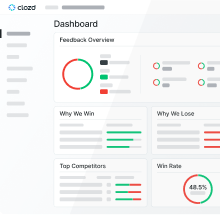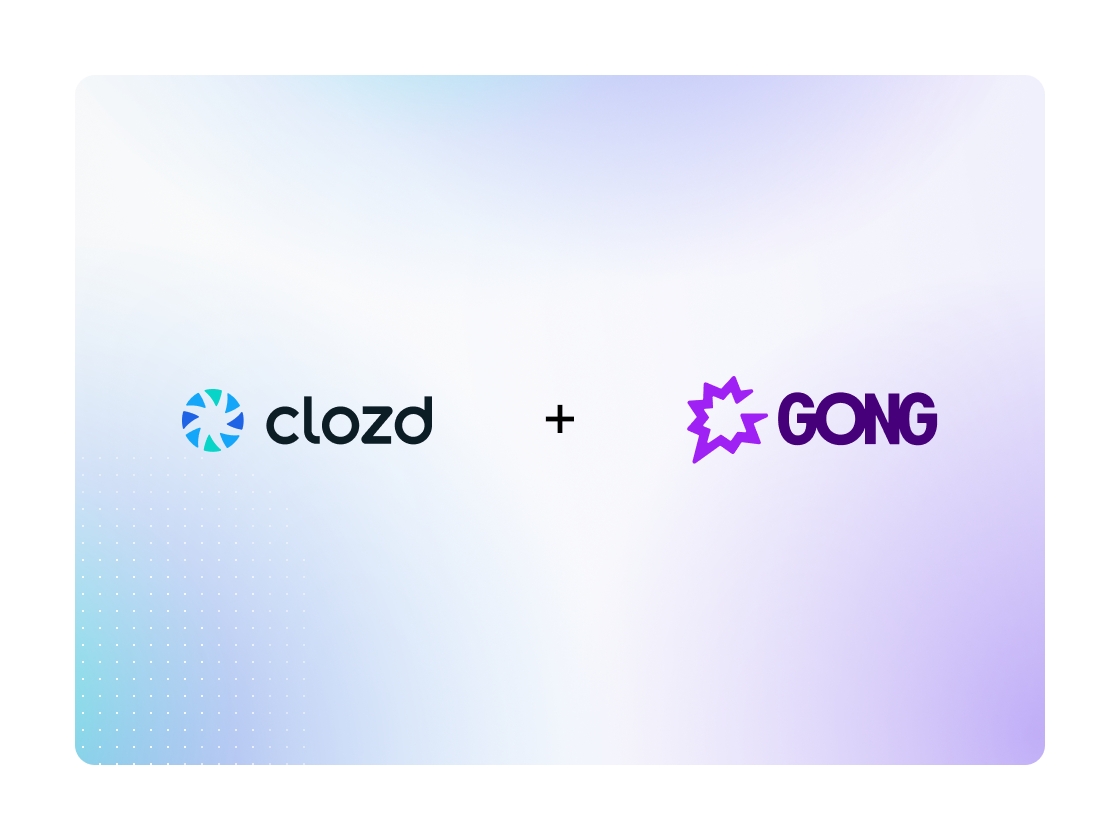As a Product Marketing Manager (PMM), you sit at a critical intersection. You bridge the gap between product development, sales, and the market, shaping how your solutions are perceived and adopted. But how do you truly know if your strategies are hitting the mark? How do you ensure your messaging resonates, your product roadmap aligns with market needs, and your sales team is equipped for success?
The answer often lies in understanding the "why" behind your wins and losses. This is where win-loss analysis becomes your most powerful tool. It's not just about tracking numbers; it's about uncovering the authentic voice of your buyer, transforming raw feedback into actionable insights that directly fuel revenue growth.
This guide will show you how to harness win-loss analysis to refine your strategies, empower your sales team, and make data-driven decisions that significantly boost your company's profitability.
What is Win-Loss Analysis, and Why Does it Matter for PMMs?
At its core, win-loss analysis is a systematic process of investigating why your company wins some deals and loses others. It involves gathering direct feedback from prospects and customers about their buying journey, their perceptions of your solution, your competitors, and the overall sales process.
For Product Marketers, this isn't just a nice-to-have; it's essential. While sales teams benefit from understanding individual deal outcomes, PMMs can leverage this data to inform broader strategic decisions. You're uniquely positioned to translate these granular insights into impactful changes across your go-to-market strategy, product development, and messaging.
Think of it this way: without win-loss analysis, you're making strategic decisions based on assumptions or incomplete data. With it, you gain a clear, unbiased view of market realities directly from the source – your buyers. This clarity allows you to pinpoint exactly where your efforts are succeeding and, more importantly, where they need to be refined to drive revenue.
How PMMs Transform Win-Loss Insights into Revenue Growth
A Product Marketing Manager's role is inherently strategic, and win-loss analysis provides the critical intelligence needed to execute that strategy effectively. By systematically analyzing deal outcomes, PMMs can identify patterns and opportunities that directly impact the bottom line. Here’s how you can use win-loss analysis to grow revenue:
Refining Messaging and Value Propositions
One of the most immediate impacts of win-loss analysis for PMMs is on messaging. You might think your value propositions are crystal clear, but buyer feedback often tells a different story. Win-loss interviews reveal:
- What resonates: Which aspects of your solution truly clicked with prospects, leading to a win?
- What falls flat: Which messages were confusing, unconvincing, or simply didn't address the buyer's core pain points?
- Hidden objections: Buyers might not voice their true concerns to a salesperson, but an independent third-party interviewer can often uncover these critical insights.
With this information, you can optimize your messaging to speak directly to your target audience's needs and priorities. You can refine your website copy, sales enablement materials, and marketing campaigns to highlight the value propositions that genuinely differentiate your offering and drive conversions. This precision in communication directly translates to higher win rates and increased revenue.
Sharpening Competitive Intelligence and Battlecards
Understanding your competitors is vital, but traditional competitive intelligence often relies on public information or internal assumptions. Win-loss analysis provides a unique, real-world perspective:
- Competitor strengths and weaknesses (from the buyer's view): Learn why prospects chose a competitor, what they liked about their offering, or where they felt your solution fell short in comparison.
- Pricing strategy insights: Understand how your pricing is perceived relative to competitors and market expectations.
- Sales team effectiveness against competitors: Identify if your sales team is effectively articulating your competitive advantages or if they need better tools.
Armed with these insights, you can update your Battlecards, providing your sales team with accurate, actionable information to counter competitor claims and highlight your unique selling points. This direct feedback from the front lines ensures your competitive strategy is grounded in reality, helping your sales reps win more deals.
Informing Product Strategy and Roadmap
Win-loss analysis offers invaluable feedback for your product managers and the broader product team. It helps answer crucial questions like:
- Are we building the right features? Did a lost deal hinge on a missing feature that a competitor offered?
- Are our existing features meeting market needs? Are buyers finding value in what we've already built?
- What are the emerging market demands? What are prospects asking for that we don't currently provide?
By analyzing patterns across multiple deals, PMMs can identify product gaps, validate feature priorities, and even uncover opportunities for new product development. This ensures your product roadmap is aligned with actual market demand, leading to solutions that buyers truly want and are willing to pay for, thereby securing future revenue.
Optimizing Go-to-Market (GTM) Strategy
A successful go-to-market strategy requires constant refinement. Win-loss analysis provides the feedback loop necessary to ensure its ongoing success. It helps you identify:
- Friction points in the sales process: Are there stages where deals consistently stall or fall through?
- Effectiveness of sales enablement: Are your sales reps equipped with the right content and training to close deals?
- Channel effectiveness: Are certain channels more successful in reaching and converting your target audience?
By understanding these dynamics, PMMs can work with sales leadership to refine the sales process, improve sales enablement materials, and optimize the overall GTM strategy. This leads to a more efficient and effective sales cycle, directly contributing to higher win rates and increased revenue.
Enhancing Sales and Marketing Alignment
One of the biggest challenges for any B2B organization is ensuring seamless collaboration between marketing and sales. Win-loss analysis acts as a powerful bridge, fostering a shared understanding of the buyer and the market.
- Shared understanding of buyer needs: Both teams gain a common, unbiased view of what truly matters to prospects.
- Consistent messaging: Marketing can create content that directly supports sales conversations, and sales can articulate the value propositions marketing promotes.
- Joint problem-solving: When a deal is lost due to a product gap or a messaging issue, both teams can collaborate on solutions rather than pointing fingers.
This alignment ensures that marketing efforts generate high-quality leads that are well-prepared for sales, and sales efforts are supported by relevant, impactful marketing materials. When marketing and sales work together effectively, leveraging shared insights from win-loss, they enhance a business's profitability by creating a more cohesive and powerful customer acquisition engine.
Your Step-by-Step Guide to a Successful Win-Loss Program
Implementing a robust win-loss program as a PMM requires a structured approach. Here’s how to build and run one effectively:
Step 1: Secure Stakeholder Buy-In
Before you even start, you need cross-functional support. Win-loss analysis impacts multiple departments, including sales, product, and executive leadership.
- Articulate the ROI: Clearly explain how win-loss insights will lead to tangible benefits like improved win rates, reduced churn, better product-market fit, and ultimately, increased revenue.
- Highlight the PMM's unique position: Emphasize how you, as a PMM, can translate these insights into actionable strategies that benefit everyone.
- Showcase potential impact: Use hypothetical scenarios or industry benchmarks to illustrate the potential gains. Getting buy-in from key stakeholders early on ensures resources, cooperation, and a receptive audience for your findings.
Step 2: Define Your Program's Focus and Scope
Not every lost deal needs an interview. To make your program efficient and impactful, define clear objectives and criteria:
- What are you trying to learn? Are you focused on a specific product line, a new market segment, or a particular competitor?
- Which deals will you analyze? Consider factors like deal size (focus on high-value deals), specific product categories, or deals involving key competitors.
- Set clear goals: Do you aim to improve win rates by X%, or reduce churn by Y%? Having measurable goals will guide your analysis and demonstrate success.
Step 3: Choose Your Methodology (Internal vs. External)
You have options for gathering win-loss data:
- Internal Interviews: Talking to your sales team, product managers, or customer success reps. This is quick and easy but can be biased. Sales reps might not always have the full picture or might be hesitant to share critical feedback.
- External Interviews: Engaging a third-party expert to interview your prospects and customers. This is often the most effective method because it provides unbiased, authentic feedback directly from the buyer. Prospects are more likely to be candid with an independent interviewer, revealing the true reasons behind their decisions. For a PMM seeking to uncover deep, actionable insights, external interviews are often superior.
Step 4: Conduct High-Quality Interviews
Regardless of your chosen methodology, the quality of your interviews is paramount.
- Focus on open-ended questions: Avoid yes/no questions. Encourage interviewees to elaborate on their experiences, perceptions, and decision-making process.
- Maintain neutrality: The goal is to understand, not to defend or sell.
- Cover key areas: Ask about their initial problem, evaluation criteria, perception of your solution vs. competitors, pricing, sales experience, and the ultimate reason for their decision.
- Record and transcribe: This ensures accuracy and allows for thorough analysis later.
Step 5: Analyze and Synthesize Data
This is where the PMM's analytical skills shine. Once you have your interview data, you need to:
- Identify patterns and themes: Look for recurring reasons for wins and losses across multiple interviews. Are there common product gaps, messaging issues, or competitive strengths?
- Categorize findings: Group similar feedback points. For example, "product missing X feature," "competitor Y offered better pricing," or "sales process was too slow."
- Quantify where possible: While qualitative, try to quantify how often certain themes appear to understand their significance.
- Uncover the "why": Go beyond surface-level reasons to understand the underlying motivations and perceptions of the buyer.
Step 6: Share Actionable Insights and Recommendations
Your analysis is only valuable if it leads to action. As a PMM, your role is to translate complex data into clear, actionable recommendations for relevant stakeholders.
- Tailor your message: Present findings differently to the product team (e.g., feature requests), the sales team (e.g., competitive battlecards), and the marketing team (e.g., messaging adjustments).
- Focus on solutions: Don't just present problems; offer concrete, strategic recommendations for improvement.
- Prioritize: Not every insight can be acted upon immediately. Help your organization prioritize the most impactful changes.
Step 7: Implement and Measure Impact
The final step is to put your recommendations into practice and track their effectiveness.
- Collaborate on implementation: Work closely with sales, product, and marketing to ensure changes are made.
- Monitor key metrics: Track changes in your win-loss ratio, average deal size, sales cycle length, and overall revenue growth. This demonstrates the ROI of your win-loss program and reinforces its value.
- Make it an ongoing program: Win-loss analysis shouldn't be a one-off project. Establish a continuous feedback loop to ensure your strategies remain agile and responsive to market changes.
Avoiding Common Win-Loss Program Mistakes
Even with the best intentions, win-loss programs can stumble. As a PMM, be aware of these common pitfalls:
Relying Solely on Internal Feedback
While internal feedback from your sales team is valuable, it's often biased or incomplete. Sales reps might not always hear the full truth from prospects, or they might interpret feedback through their own lens. To get the authentic buyer perspective, external, third-party interviews are crucial. They provide an unbiased view that internal sources simply can't match.
Not Acting on Insights
Collecting data is only half the battle. The biggest mistake is failing to translate insights into concrete actions. A stack of reports, no matter how insightful, won't drive revenue if the recommendations aren't implemented. As a PMM, champion the findings and push for cross-functional initiatives to address the identified issues.
Inconsistent Program Execution
A sporadic, one-off approach to win-loss analysis yields limited results. Market dynamics, competitor strategies, and buyer needs are constantly evolving. For sustained revenue growth, your win-loss program needs to be an ongoing, consistent process. Regular interviews and analysis ensure you have real-time insights to adapt your strategies.
Lack of Cross-Functional Buy-In
Without the support and participation of sales, product, and executive leadership, your win-loss program will struggle to gain traction. Ensure you communicate the value and findings broadly, demonstrating how the insights benefit each department. Strong buy-in ensures that recommendations are taken seriously and implemented effectively across the organization.
Drive Revenue Growth with Confidence
Win-loss analysis is more than just a data collection exercise; it's a strategic imperative for Product Marketing Managers aiming to drive significant revenue growth. By systematically understanding why you win and lose, you gain unparalleled clarity into your market, your product, your messaging, and your sales process.
As a PMM, you are uniquely positioned to take these actionable insights and transform them into refined strategies, empowered sales teams, and a product that truly resonates with your target audience. Embrace win-loss analysis as a continuous feedback loop, and you'll not only enhance your company's profitability but also solidify your role as a strategic leader. Start your win-loss journey today and unlock your full revenue potential.











.svg)


.png)








.svg)

.svg)




